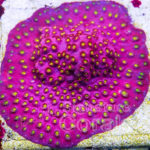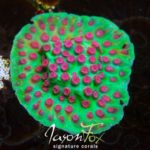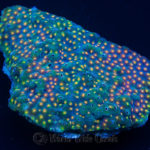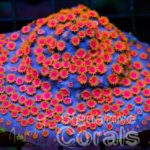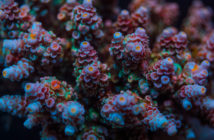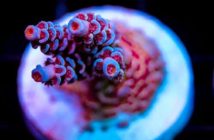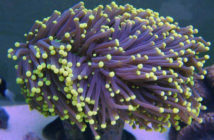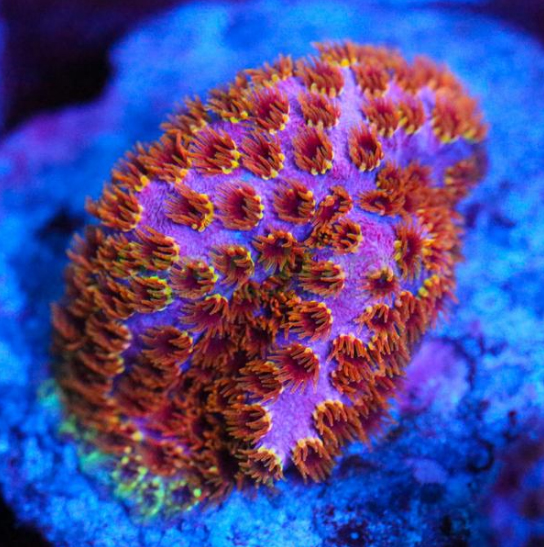
Our featured color of the week comes to us originally from World Wide Corals (WWC) in Orlando, FL but the photos are from Richard Negret at Cornbred corals. As many of you know, Richard and the folks at WWC have a knack for finding both beautiful and unusual corals. The WWC 4 color Cyphastrea is no exception.
About
Over the years, several different color variations of Cyphastrea corals have appeared in the aquarium trade and there thought to be five known species of this Genus.
- Cyphastrea serialis (Forskål, 1775)
- Cyphastrea danai Milne Edwards, 1857
- Cyphastrea brueggemanni Quelch, 1886
- Cyphastrea suvadivae Gardiner, 1904
- Cyphastrea conferta Nemenzo, 1959
History
The meteor shower Cyphastrea (pronunciation) was probably the first named Cyphastrea to enter into the aquarium hobby in the US. With it’s teal-green body and contrasting redish-orange corallites, as it’s name suggests, the meteor shower Cyphastrea resembles the appearance of meteors streaking through the night sky. Fortunately, this color strain isn’t rare in the wild and it’s easy to frag. The growth rate is very rapid in a healthy reef aquarium. Other collectible specimens include the Party Crasher, WWC Bizarro, TCR Alien Fox, Cornbread Bling Bling, UC Rainbow Cyphastrea and several more.

Photo Credit: Unique Corals Meteor Shower Cyphastrea
Care
Cyphastrea sp. prefer lower light. It’s best to keep these corals lower in the aquarium where the greatest color contrast between the body and corallites will be observed. Cyphastrea corals are moderately easy to care for and they are also a good indicator of overall water parameters as they can rapidly perish if water conditions take a turn for the worse. Cyphastrea Corals requiring moderate to strong aquarium water movement and its important to leave plenty of space between them and neighboring corals because of it’s rapid growth rate.
Cyphastrea corals obtain the necessary nutritional requirements by means of symbiotic zooxanthellae hosted within its body and It will also benefit from supplemental micro-plankton feeding and amino acid supplements. Lastly, like other stony corals, they also require calcium, magnesium, strontium, and other trace elements added to the aquarium water.
Gallery
- Photo Credit: Jason Fox Signature Corals – Cornbred Bling Bling Cypastrea
- Photo Credit: Jason Fox Signature Corals – TCR Alien Pox
- Photo Credit: WWC Rainbow Cyphastrea
- Photo Credit: Jason Fox Signature Corals – WWC Bizarro Cyphastrea


